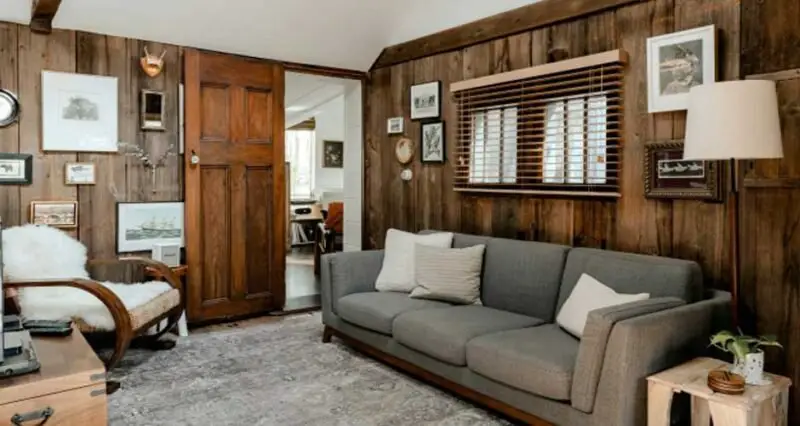
Creating a living environment that supports the well-being of a loved one with Alzheimer’s is a compassionate and essential task. By designing a space that alleviates stress and promotes relaxation, caregivers can significantly improve the quality of life for those facing this challenging condition. This article delves into practical strategies for transforming a living area into a sanctuary that soothes and supports. Keep reading to learn how you can contribute to the comfort and care of your loved one.
Understanding Alzheimer’s and the Need for a Calming Space
Alzheimer’s disease is a progressive neurological disorder that impairs memory, thinking, and behavior. As the disease advances, individuals may experience increased levels of anxiety, agitation, and confusion. Creating a calming space is crucial in providing a sense of security and stability, which can mitigate these symptoms. It helps manage stress and provides a retreat where one can feel safe and at ease.
Caregivers must recognize that the physical environment plays a significant role in the well-being of Alzheimer’s patients. Disorienting layouts, harsh lighting, and clutter can exacerbate feelings of disarray and discomfort. Through careful adjustments and considered design choices, a calming space caters to the unique needs of those with Alzheimer’s, helping to reduce the frequency and intensity of discomfort.
Acknowledging the individual preferences and habits of a loved one with Alzheimer’s is pivotal when crafting a calming space. By tailoring the environment to their tastes and past routines, caregivers can foster a sense of familiarity and continuity. This can be particularly comforting as Alzheimer’s patients often find solace in the recognizable and routine aspects of their lives.
Before modifying an environment, it is crucial to understand what triggers might cause agitation or stress. This involves observing patterns in behavior and consulting with healthcare professionals. For more insights, one might explore what are the symptoms of Alzheimer’s to comprehend how environmental factors may influence these signs.
Essential Elements of a Calming Space for Alzheimer’s Patients
The foundation of a calming space for Alzheimer’s patients rests on simplicity and order. A minimalist approach, with a clear and accessible layout, helps in reducing confusion and anxiety. Avoiding clutter and unnecessary furnishings reduces hazards and creates a serene atmosphere. It’s important to have open paths for easy navigation, complemented by cozy areas for rest.
Comfortable seating and calming visuals are key. Soft, cushioned furniture encourages relaxation, while visual elements such as family photos and familiar artwork can provide comfort. Additionally, incorporating elements of nature, such as a large fake plant, can bring a sense of tranquility and life into the space without the maintenance required for real plants.
Appropriate auditory stimulation should also be considered. Soft background music or the soothing sounds of nature can help create a relaxing auditory environment. Conversely, minimizing exposure to loud or unexpected noises is crucial in preventing discomfort and confusion commonly experienced by Alzheimer’s patients.
Regarding safety, pay close attention to furniture placement and adaptations. There should be ample room for movement, with secure rugs and non-slip surfaces where necessary. Safety adaptations like grab rails and clear, well-labeled storage can also create a hazard-free living environment that supports autonomy and ease of use.
Color and Lighting Considerations for a Tranquil Environment
Color profoundly affects mood and emotional response making it important to consider when creating a calming space. Soft, soothing colors like blues, greens, and light neutrals are recommended to reduce stress and promote a sense of calm. Bold patterns and bright, contrasting colors could be overstimulating and should be avoided to maintain a peaceful setting.
Lighting is another significant factor that influences mood and well-being. Natural light is best for enhancing mood, but soft artificial lighting can be a good alternative where that’s not feasible. Installing adjustable lighting fixtures allows caregivers to tailor light levels to match the time of day and the mood or activity of their loved one.
Limiting glare and harsh shadows, which can be confusing and disorienting, is also pertinent. Blinds or sheer curtains can mitigate sunlight when necessary, and lamps with shades can soften the light from bulbs. The thoughtful placement of mirrors to reflect light can help brighten rooms without the need for additional harsh lighting.
Providing a gently lit environment at night can assist individuals in finding their way if they need to. Nightlights in hallways, bedrooms, and bathrooms can prove invaluable, providing just enough illumination to see without disrupting the circadian rhythm.
Overall, creating a calming space for a loved one with Alzheimer’s enhances their comfort and well-being. By thoughtfully considering the environment’s layout, colors, and sensory elements, caregivers can significantly alleviate anxiety and promote a sense of security.

